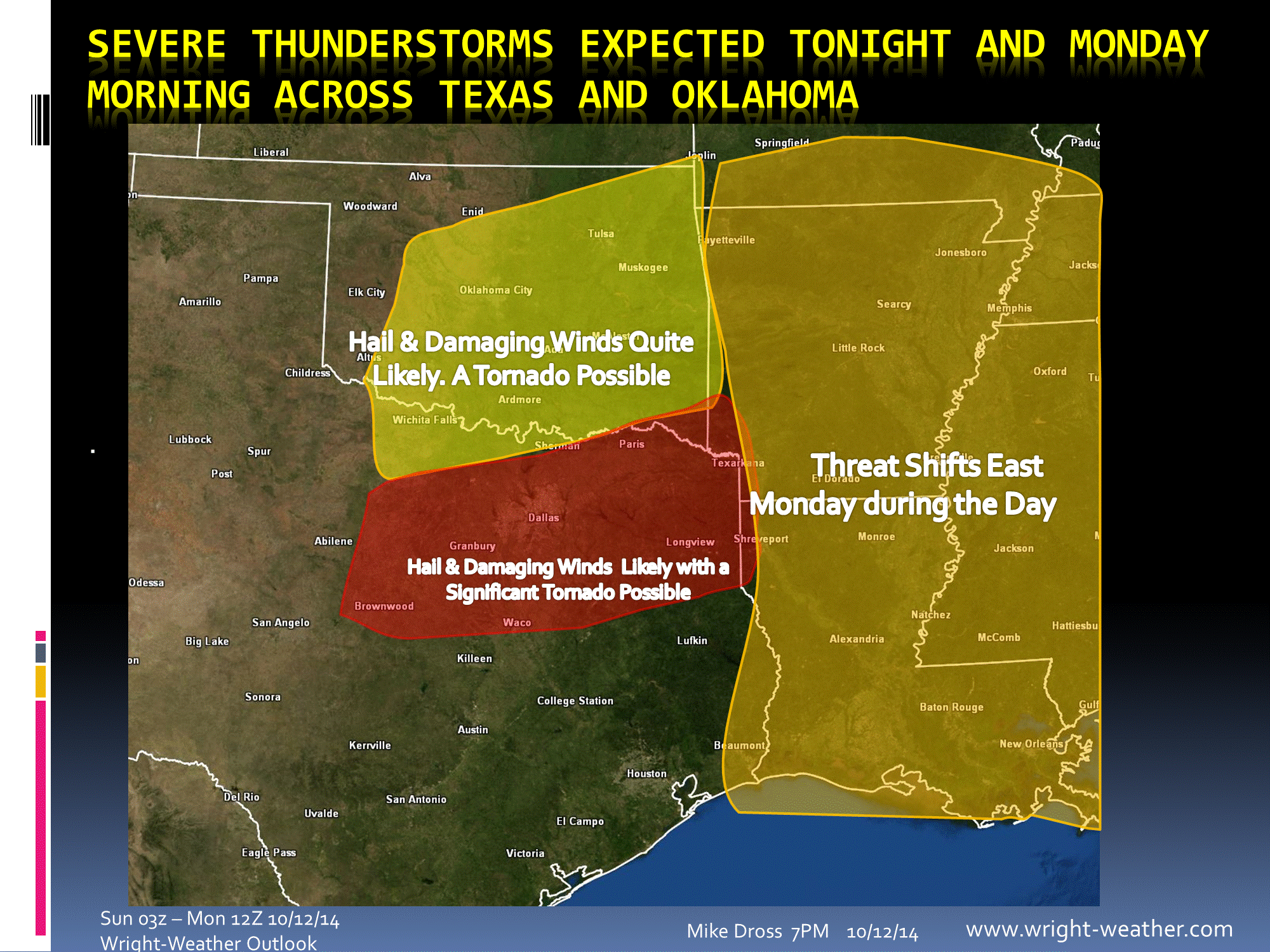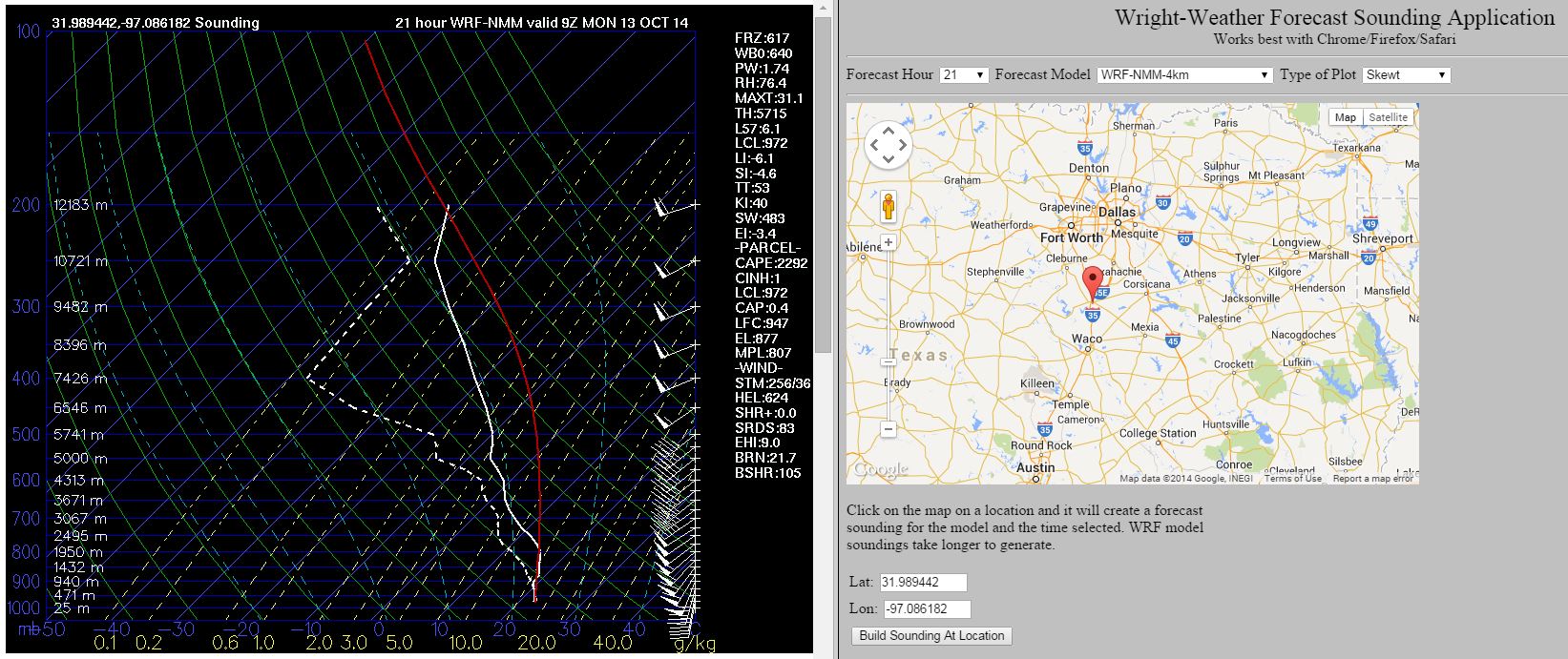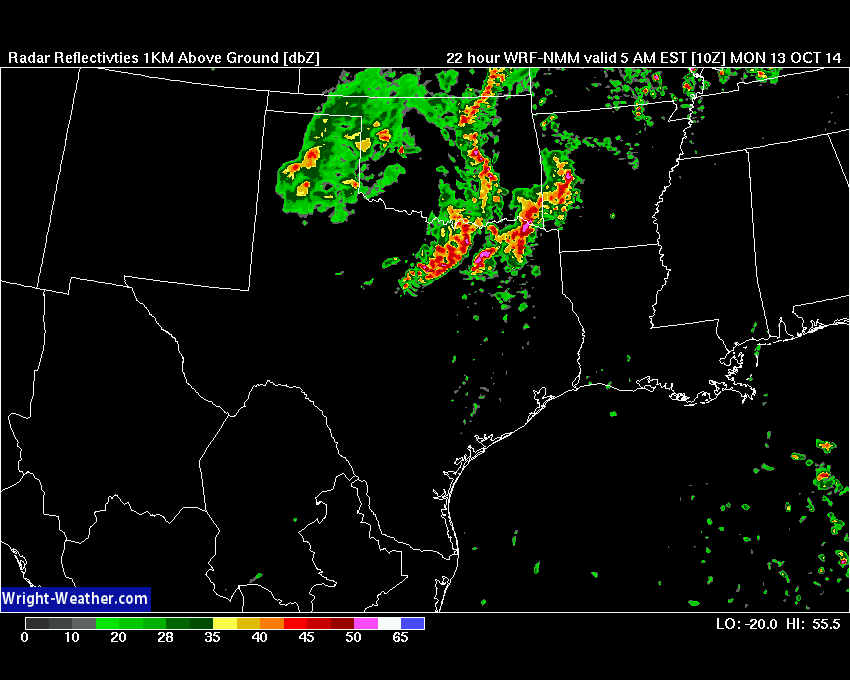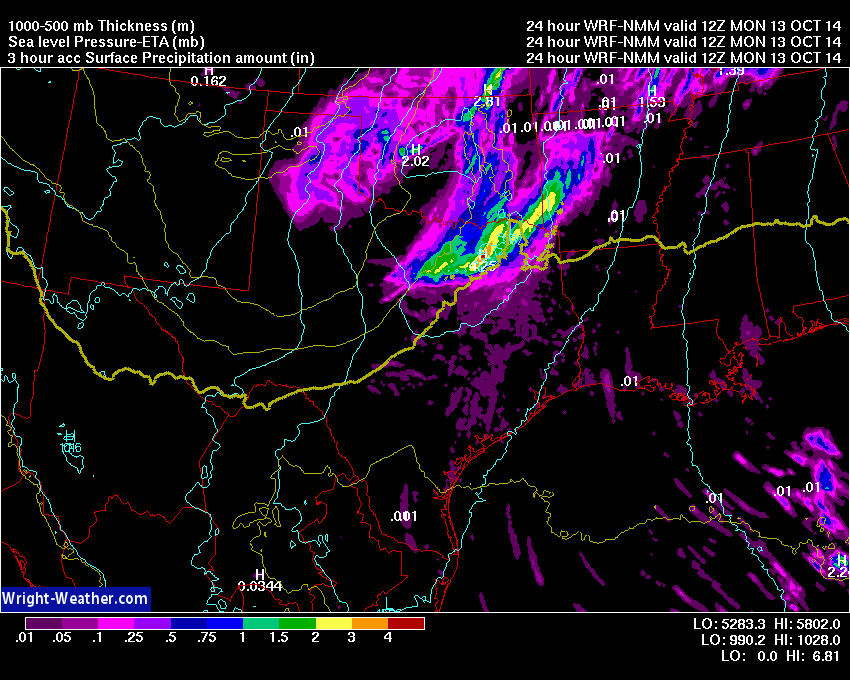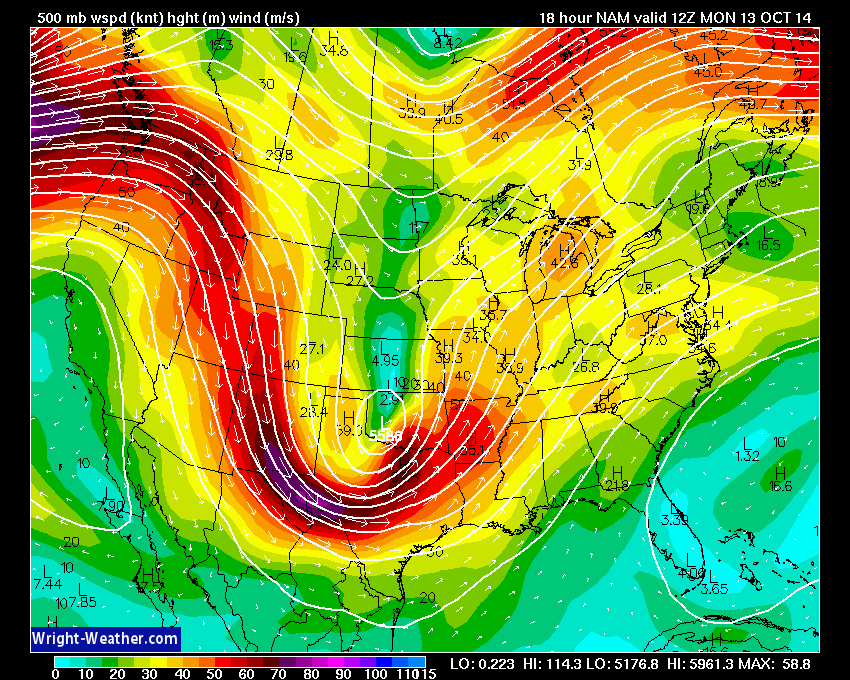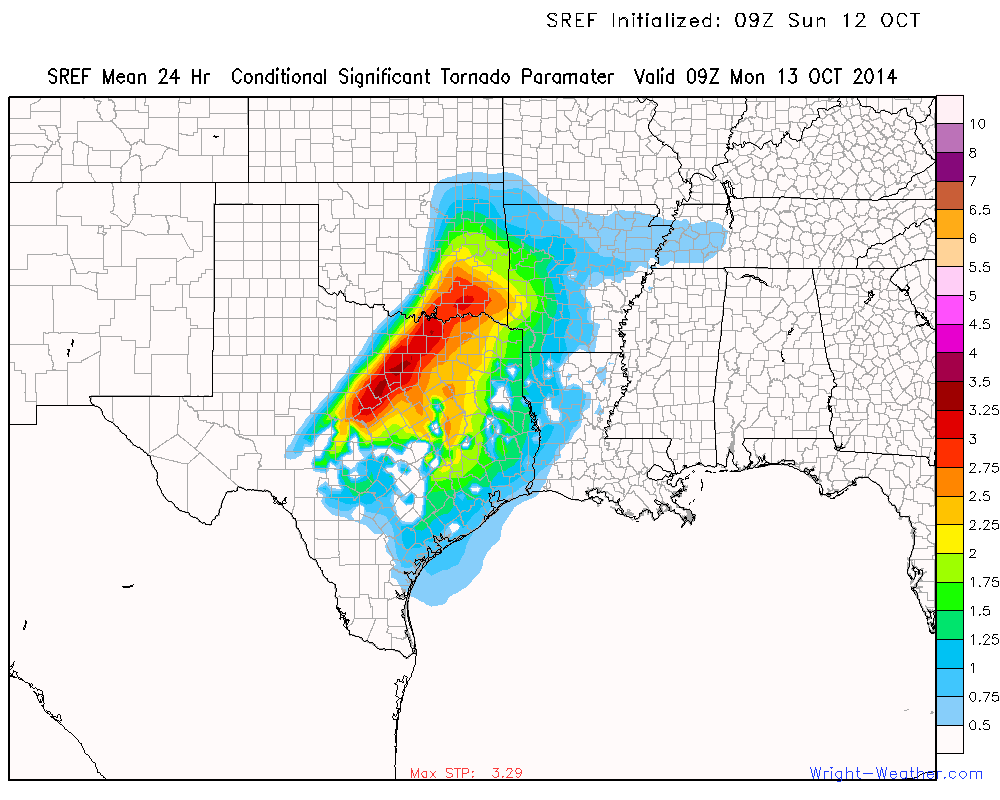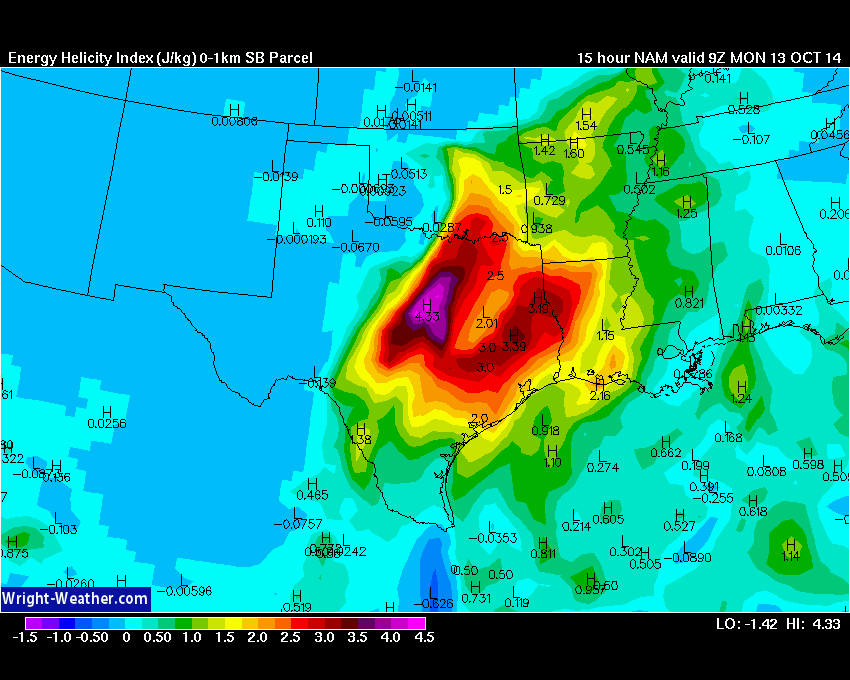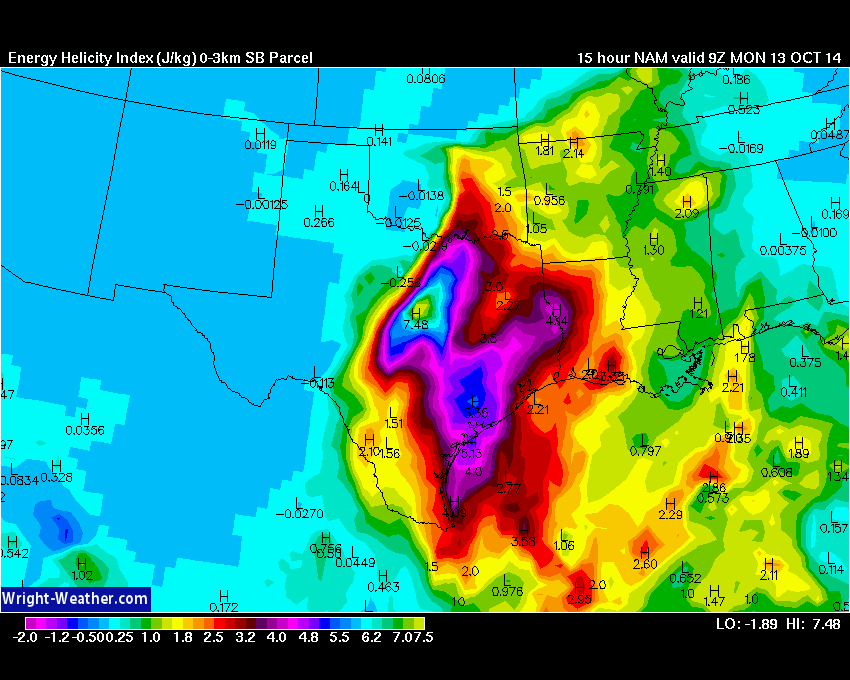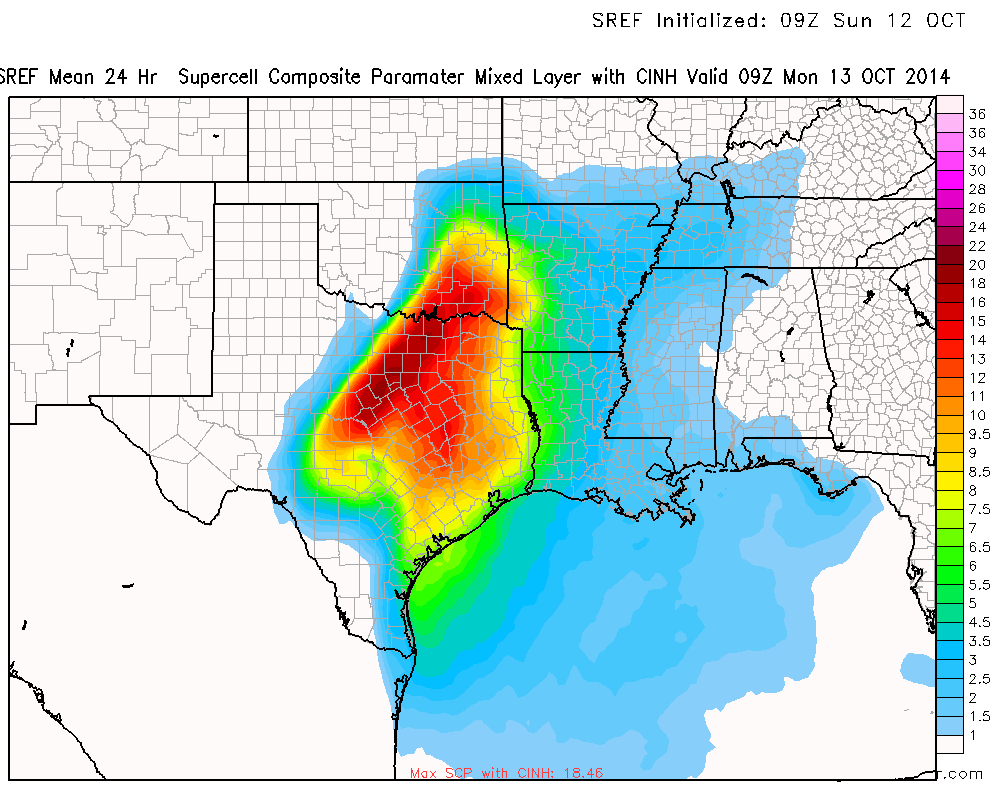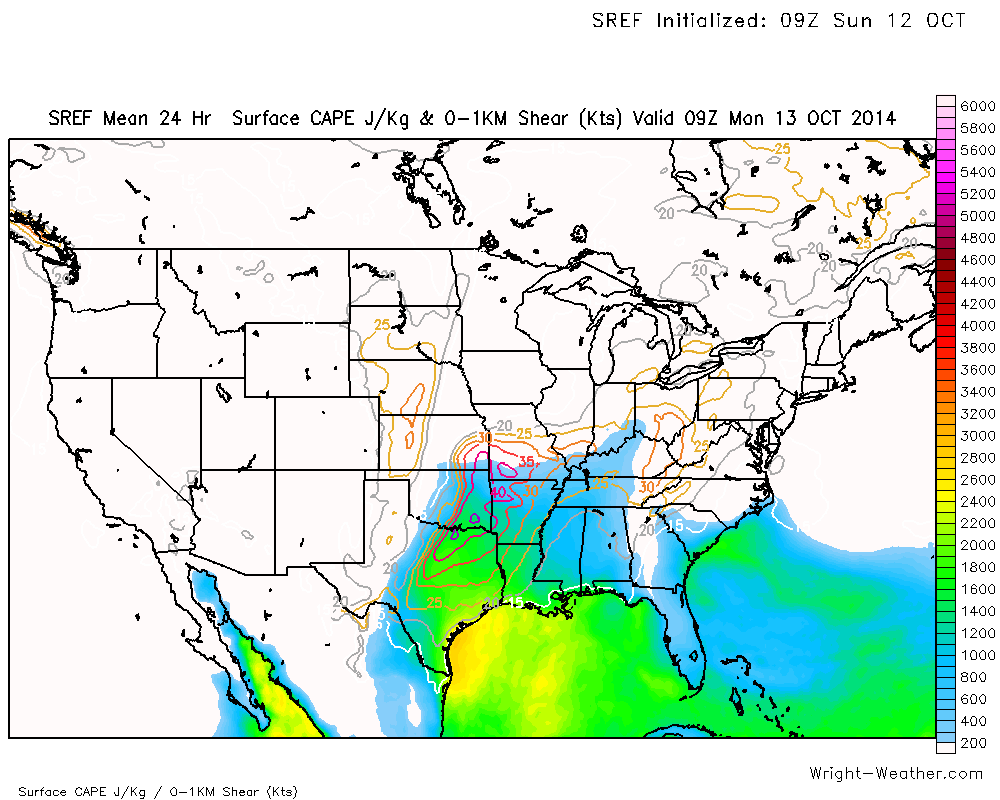A strong upper level low pressure system will move out of the Rockies into the Southern Plains tonight. This will intensify a surface low pressure system over Western Oklahoma that will move eastward through Oklahoma during the morning on Monday.
Returning Gulf of Mexico moisture across Central and Eastern Texas with dewpoints in the middle 60s to middle 70s will continue to advect northward overnight. Showers and thunderstorms are expected to develop across Central & Eastern Texas later this evening, ahead of a cold front that will sweep into North Central Texas around midnight. A triple point region will develop and move near the Red River with other smaller mesoscale boundaries south of the warm front where convection will develop. A strong line of convection is expected to develop along the cold front as it moves east of the dry line region around 4-5Z. Storms will likely become severe as they intensify under a strong 60-70kt cyclonic mid-level jet.
Parameters suggest all modes of severe convection are possible. Linear convection is likely to be the most predominant mode, with embedded line echo wave patterns (LEWP’S) with severe wind gusts, but embedded & discrete supercells are also quite likely given the high shear values, very high 0-3km helicities. Bulk Richardson Numbers also favor some discrete supercells along and south of I-20.
With the low lifted condensation levels, very high 0-1km helicities, shear values and moderate instability. Some tornadoes are quite possible with the stronger mesocylones.
The region at most risk of supercells is south of the Red River in Texas with an enhanced risk of tornadoes along and south of I-20 where the combination of helicities, shear, CAPE and upper forcing will be maximized. South of Waco, convective inhibition values will likely be too high to allow for much activity, but if a cell develops may be severe/tornadic.
The severe threat works eastward across Northeast Texas into Arkansas ans Louisiana during the day on Monday.


